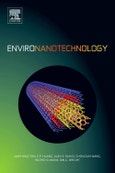Understanding and utilizing the interactions between environment and nanoscale materials is a new way to resolve the increasingly challenging environmental issues we are facing and will continue to face. Environanotechnology is the nanoscale technology developed for monitoring the quality of the environment, treating water and wastewater, as well as controlling air pollutants. Therefore, the applications of nanotechnology in environmental engineering have been of great interest to many fields and consequently a fair amount of research on the use of nanoscale materials for dealing with environmental issues has been conducted.
The aim of this book is to report on the results recently achieved in different countries. It provides useful technological information for environmental scientists and will assist them in creating cost-effective nanotechnologies to solve critical environmental problems, including those associated with energy production.
The aim of this book is to report on the results recently achieved in different countries. It provides useful technological information for environmental scientists and will assist them in creating cost-effective nanotechnologies to solve critical environmental problems, including those associated with energy production.
Table of Contents
1. Responses of Ceriodaphnia dubia to Photocatalytic Nano-TiO2 Particles2. High capacity removal of mercury(II) ions by Poly(hydroxyethyl methacrylate) nanoparticles
3. CO2 response of nanostructured CoSb2O6 synthesized by a non-aqueous co-precipitation method
4. Capture of CO2 by modified multiwalled carbon nanotubes
5. Kinetics, thermodynamics and regeneration of BTEX adsorption in aqueous solutions via NaOCl oxidized carbon nanotubes
6. Nanostructured Metal Oxide Gas Sensors for Air Quality Monitoring
7. Hydrogen Storage on Carbon Adsorbents: Review
8. Treatment of nanodiamonds in supercritical water
9. Spectrophotometric Flow-Injection System Using Multiwalled Carbon Nanotubes (MWCNT) as Solid Preconcentrator for Copper Monitoring in Water Samples
10. Application of carbon nanotubes as a solid-phase extraction material
for environmental samples
11. Fire retarded environmentally friendly flexible foam materials using nanotechnology
12. Simulation of Hydrogen Purification by Pressure Swing Adsorption for Application in Fuel Cells
13. On the Relationship between Social Ethics and Environmental Nanotechnology








